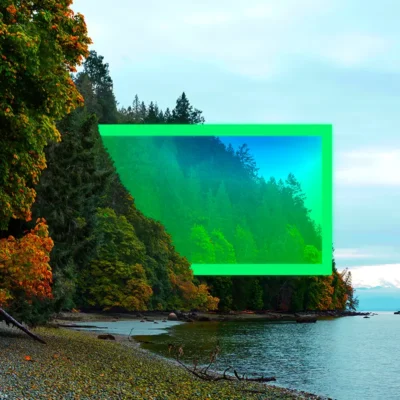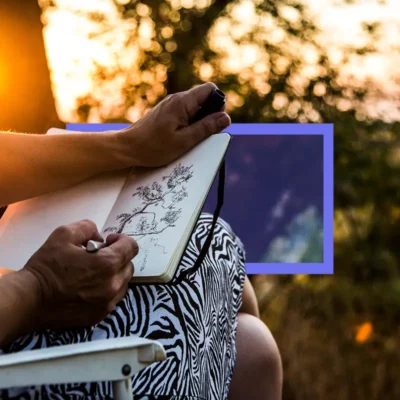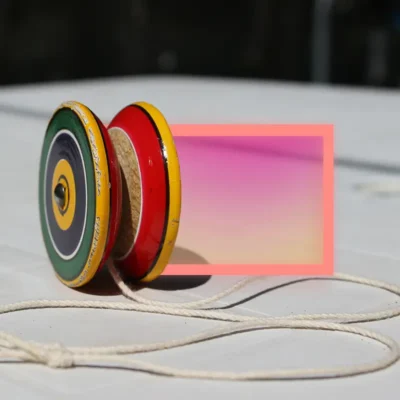Finding meaning in the vastness of the universe
A universal fact: every atom of iron, from the metal in your cooking pans to the tiny mineral reserves in your blood that turn it red, is formed in a moment of death. The death of entire solar systems ripping themselves apart gives us all life. Renowned astronomer and science commentator Michelle Thaller shares a Meditative Story about cosmic awe and deep connection – both to our fellow human beings and to the universe around us. What do you see when you look up at the night sky? Michelle takes you there. Photo credit: Mariah Miranda.
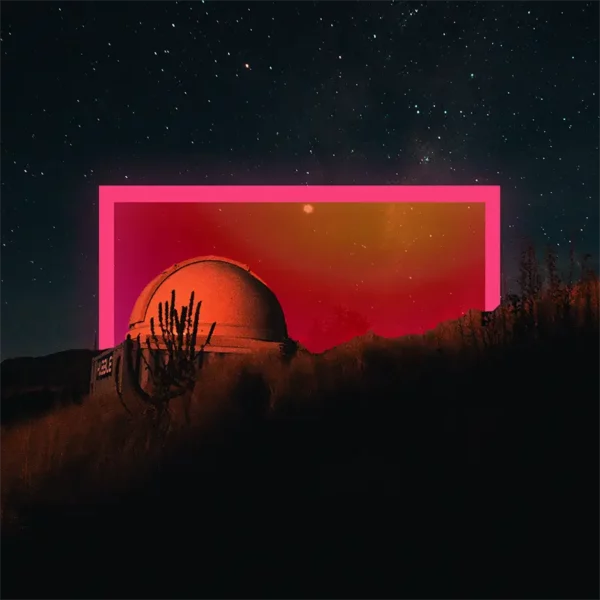
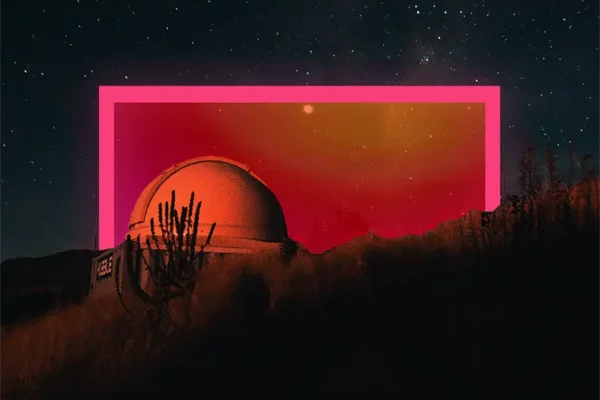
Table of Contents:
Transcript:
Finding meaning in the vastness of the universe
MICHELLE THALLER: Everything about you has been here for the entirety of time, and everything that you are will utterly vanish in the blink of an eye. This is what you are; there is nothing to do about it. To be so significant and yet so insignificant all at once is the essence and the balance of what it means to be alive.
ROHAN GUNATILLAKE: I’ve always loved looking up at a clear night sky full of stars, space, and questions. And few people know what’s up there better than astronomer and science commentator Michelle Thaller. In today’s episode, Michelle takes us up to the heavens, to consider our significance and connectedness in a universe whose scale means that human life is almost imperceptible.
In this series, we blend immersive, first-person stories with mindfulness prompts to help you recharge at any time of the day. I’m Rohan, and I’ll be your guide for Meditative Story. From time to time, you’ll hear me come in with a brief prompt. Some may help you settle in more deeply. Others, perhaps not so much. Either way, just stay inside the story. That’s all you need to do to feel its effect.
Before we hear from Michelle, let’s take just a little time to settle. If you can see the sky, look up at it. If you can’t – and it’s safe to do so – just look up at the space above you. And feel the sensations of your feet on the ground at the same time. Aware of the space around you. And at the same time grounded, connected to the earth.
The body relaxed. The body breathing. Your senses open. Your mind open. Meeting the world.
THALLER: For nearly my entire life, I have felt lonely. I have no memory of when this started – and now I have no idea what it would be like to experience a single moment of my life without it. I constantly struggle with feelings of isolation from other people, from myself, from life. But for as long as I can remember, there’s one place I don’t feel lonely: under a clear, star-filled sky.
I have no idea why this should be the case; honestly, it makes no sense at all. My mother told me she used to find me, barely able to walk, trying to go outside and look at the stars. They’ve always felt like old friends, and they make me feel safe.
Now I’m a professional astronomer, but that emotional response has never changed. Even now, when I’ve spent decades learning the physics of the hot gases in their interiors, doing the math to calculate their orbits, I still go outside just to look at them with my own eyes. I need to. I need to spend time with my friends.
I felt this way even before I knew what the stars were, and now that I know much more about them, it turns out that my instincts were deeply, almost strangely, correct. I think most of us have some idea that astronomers are people who live with things much larger than themselves. Stars are huge, almost unimaginably so, and the distances to them intractable. And that’s the smallest end of the astronomical scale. Galaxies are larger still, monsters too vast to comprehend; elegant rotating disks of hundreds of billions of stars, uncountable trillions of miles across.
Scales of time are everywhere around you too. We study the lives of the stars, although a human lifespan to them is like a tiny two-winged midge that is born, breeds, and dies in a day. Some stars live only a few million years – a fast, intense life in stellar terms – while others will live longer than time has yet existed.
But stars honor a lifecycle like everything in the universe: they are born, live, and die. And we are a consequence of this cycle. I would not be standing here, looking up at the sky, had not generations of stars lived and died to bring me here, to this moment. This is an incredible thing to know, and it remains my favorite single fact.
At the beginning of the universe, only the very simplest atoms existed. Nowhere, in the entirety of space, was there a single bit of the stuff that makes you into the being that you are; no oxygen, carbon, calcium. Deep in the core of stars, simple atoms are fused together into larger, more complex ones. The largest ones are not easy to make; they take the death of a star. The actual moment of death for a giant star is one of the few things in the sky that actually happens quickly, to a human sensibility: they explode violently in what we call a supernova explosion. It’s in this explosion that all the larger atoms of the universe are created. Every atom of iron, from the metal in your cooking pans to the tiny mineral reserves in your blood that turn it red, is formed from these moments of death; entire solar systems ripping themselves apart in an instant. An instant. And you can see these, all over the sky, on a dark night in California.
Perched in the hills on the outskirts of San Diego, the Mount Palomar telescope is a grand relic from the middle of the last century. Its mirror first saw light in 1948, and is one of the greatest accomplishments of humankind. The 200 inch Hale Telescope on Mount Palomar is the most beautiful piece of technology ever built.
Unlike today’s telescopes, which are certainly more powerful, the Hale is breathtakingly elegant. The classically-proportioned dome is large enough to cast the central behemoth into shadow, and the telescope itself is long enough to make it feel that you’re actually sighting the stars. It’s an example of lost technology, not unlike the Pyramids or Stonehenge. Every single time I go to Mount Palomar as an astronomer, I feel a wonderful, dissonant feeling of being in a sacred temple, and being a joyous, disbelieving child erroneously left alone among treasure by careless adults.
I can never believe I’m allowed to enter that space. Even the path to Palomar feels like a journey away from the mundane world. Switchback roads that never fail to disorient me and make me a little seasick, a desert that gives way to tall trees and far vistas around each turn. The smell of pine and dust on the way up. Then I open the doors of the observatory and I’m greeted by the scent of marble hallways and the mellow old grease that coats the vast gears under the floor that have turned the telescope to track the stars for 70 years. I set up my experiment for the night, which requires the giant eye to stare at the same tiny part of the sky for many hours, and I settle in for a long night.
GUNATILLAKE: How settled do you feel right now? As settled as Michelle, ready for her long night observing the heavens? Or do you have a sliver of impatience, the mind restless to move onto what’s next? Note it, and come back to your breath.
THALLER: With some time to spare, I go outside to walk around the dome, scan the sky for any approaching weather, and honestly, just enjoy the moment with the unaltered night sky. No telescopes, small or giant, needed. My old friends are a comfort to my warm, living eyes.
I wander over to check in with astronomers working in a nearby building that houses another old telescope that’s been repurposed for modern research – in this case, it scans the skies looking for the brief blasts of light that indicate a massive star has died, exploded in a supernova. I ask the woman working that night how many supernovas she’s found so far. “A dozen tonight,” she tells me.
I walk back through the woods and look back up at the sky, I feel unequal to the task of even trying to understand what that means. In one evening, a dozen star systems, complete with any planets or life around them, came to a violent and sudden end, blown to bits. A dozen. In a few hours. This goes on around us every night, every day, every hour.
And from the debris of that death comes every thing, literally every atom, we need for life. Spreading their nuclear-furnaced debris back into space, the galaxy now has more of the stuff of life to work with. I wouldn’t be here tonight had many millions of stars not died before. Some atoms in my body were formed, literally, a hundred thousand trillion miles away from where I sit tonight. I am vast. Me. And I am alive. And I’m soaked to the core of my existence in death; unimaginably vast death. Birth and death bonded together cheek to jowl, so tightly that one leaks into the other, across a galaxy. That is what I am. That is what you are.
The story of the universe doesn’t care if you think you’re worthy or not, if you wish to embrace this truth or reject it. There is no possible way for the universe to judge you; none of our human-made barriers or classifications exist.
GUNATILLAKE: We spend so much of our lives, within the containers of labels and classifications. Labels put there by others, or by ourselves. What might it be like to not be judged at all? How freeing would it be?
THALLER: Often, I feel overwhelmed with even my small, limited perception of the larger universe and my deep connection to it. Sometimes, I honestly can only deal with it by letting go. At this scale, so large and so small, there are no expectations. Everything can drop away. Everything about you has been here for the entirety of time, and everything that you are will utterly vanish in the blink of an eye. This is what you are; there is nothing to do about it. To be so significant and yet so insignificant all at once is the essence and the balance of what it means to be alive.
What expectations have you put on yourself, your life, others, other lives? I spent the last few decades of my life pushing so hard. I constantly feel inadequate, not smart enough, not hard-working enough, just plain wrong. I constantly yearn to feel accepted, be part of a family. I crave connection and intimacy. These feelings have led me to try to hold on to people too fiercely, fall in love too quickly, fear change too intensely. At times, it has driven people away. I learned to push my emotions so deep down, I couldn’t even feel them anymore. I thought this was being strong, and I was proud of my control. The only problem was, it didn’t work. I became more and more stressed, then pushed harder and harder, until it all came crashing down and I had to, for the first time in my life, actually listen to my feelings.
This is also the universe trying to know itself; there is nothing less perfect about your real, authentic self, no matter your expectations. You can just let go. You can even let go of the shame of not being able to let go. Don’t let this be another way to judge yourself. The loneliness and fear and insecurity are still here with me – and always will be. And they are also part of the lesson the universe is trying to learn through my tiny life. The universe doesn’t care about the definitions, limitations, and expectations you’ve put on yourself. You are part of it just by existing. And so is everyone around you, as well as everything around you – every bird and flower, and rock and wave.
GUNATILLAKE: You can just let go. It’s not always easy, but you can just let go.
THALLER: There is another amazing secret that even today, scientists are teasing out of the universe. For more than 100 years now, going back to the work of Albert Einstein, we have begun to understand that time is not a progression, not a river that runs in one direction. Instead, time is a landscape, much like space. From the right perspective (and yes, unfortunately one that three-dimensional creatures like us can’t see), all of time would be laid out before you, every instant that has ever existed or ever will exist.
There’s really nothing more real about this moment right now than moments that are billions of years in the future or millions of years in what we think of as the past. Not only am I made of life and death, but I am, individually, all those things at once. The earth has not formed yet. The sun has died and all the stars gone dark for uncountable trillions of years. Now.
I think of that when contemplating love and loss; it helps me, honestly just a little, but it does help me, to deal with the fear and loneliness that are as much a part of my life as breath. I’ve said to my husband, “When the universe began, I was holding your hand, and when the universe ends, I’ll be holding your hand.” And we actually believe that to be literally true.
Rohan’s closing meditation
GUNATILLAKE: The nighttime sky has long been a source of awe and wonder. There’s something about looking up and connecting with that vast expanse above that dilutes and reframes whatever issues we’re dealing with at the time. Michelle put it beautifully: the universe isn’t moved by whatever limitations we put upon ourselves. We are a part of it all the same. Held in its vastness. Part of that vastness. Made of it even.
So with your permission, let me guide you through a meditation flowing from that theme.
If it’s safe and comfortable to close your eyes, then please do so. And if you can’t right now, that’s totally fine, the practice will still work for you, but you might want to try it again at a time when you can be still with eyes closed. That might be fun.
Ok. Relaxing your body. Relaxing your mind. Letting your eyelids rest softly closed, if that’s ok. Your face, your hands, your belly relaxed. And as you relax, let your attention settle on the inner cinema screen of your mind, the screen of your imagination.
Begin by picturing yourself in the space that you’re in. Just as it is. Imagine the setting, the layout. And feel yourself really inhabiting that place.
Now allow the picture to expand to include your city. Perhaps as one of those top-down aerial shots. See how much space you take up in this view, how much smaller you are.
Now expand your imagination even further, to the region you’re in, and then to the country. Notice where you are in this picture.
Now we’re going to allow the aerial shot to go all the way into space. Imagine seeing the Earth from the moon. Seeing where you are on the planet. Notice how vast the earth is. The oceans, the land masses, the weather systems.
Now expand even further out, moving away from the sun. Past Mars, Jupiter, past Saturn and its rings. The sun shrinking, and the Earth – where we are – starting to vanish from sight entirely.
Now allow your mind’s eye to move out even further, all the way to the point where you’re taking in the whole of the Milky Way galaxy. How much space do you take up at this scale? And what does this vantage point bring up for you? Awe? Fear? Confusion? Wonder?
During this whole thought experiment, every single thing you’ve imagined has been in your mind. You didn’t physically travel out to the edge of space. You imagined your way through a series of complex thoughts.
So, notice that as you sit, stand or lie here, not only are thoughts arising in your awareness, but so is every other aspect of your experience: sights, sounds, smells, and taste. The sensations of your body. They all wash through your experience. Sensations which arise, stick around for a while and then move on.
Notice how not a single thing arises outside of your experience. All of this is happening in your awareness. Furthermore, it’s the only experience you’ve ever known. Can you think of anything that you’ve ever known which you didn’t know through your direct experience?
From this vantage point, every single thing you’ve thought, felt, or known has arisen within this human experience of ours.
Anything you can imagine as being outside of it, including the vast magnitudes of space, arises as a thought within this experience.
We are the universe knowing itself. We are made of stars.
So if it helps to remember that when faced with something which closes down our sense of wonder, which contracts us, then my invitation would be to do so. And I’m sure that Michelle would agree.



